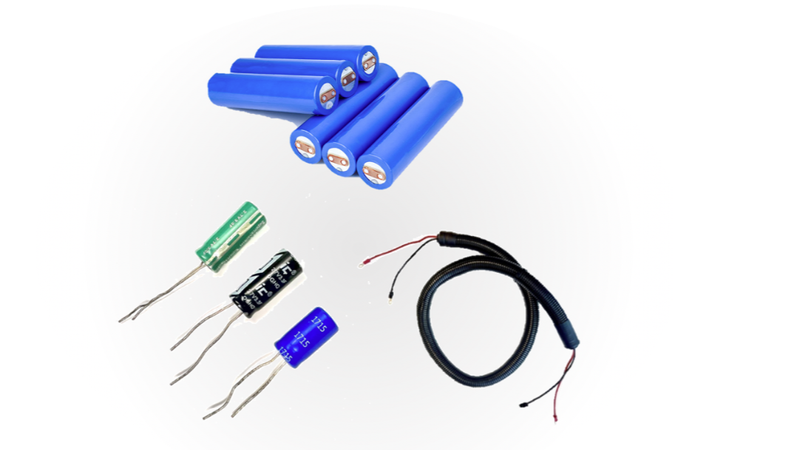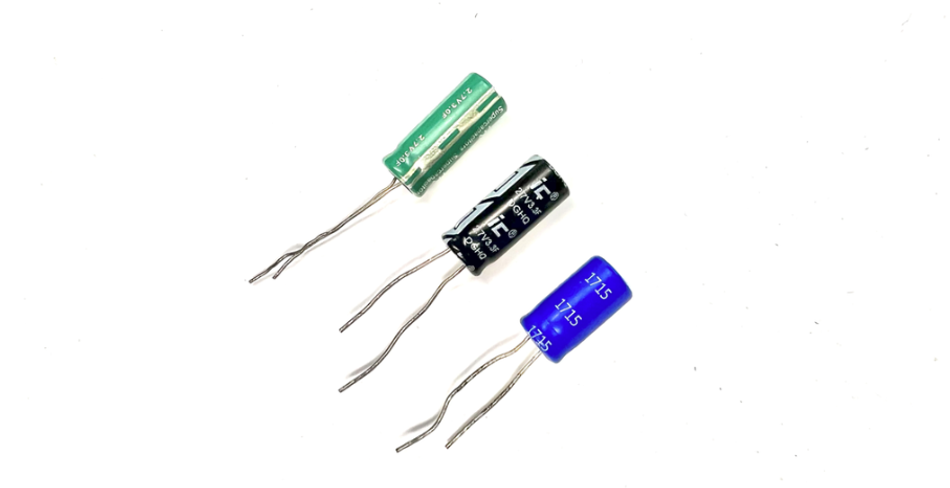Batteries or Supercapacitors? Why Not Both?
Batteries are great, but they are not perfect. The same can be said about supercapacitors. Actually, where one is strong the other is weak. This is why there is growing interest in using both at the same time, but that can be challenging. In this article, we talk about differences between batteries, supercapacitors, hybrids, and how Capacitech’s unique approach to energy storage systems overcomes challenges faced in the past.
It can be a difficult decision when deciding whether to utilize batteries or supercapacitors. Batteries offer a steady source of power but can suffer from their capacity degrading over time. On the other hand, supercapacitors provide quick charging and discharging capabilities but are limited when it comes to long duration storage capacity. This challenge is why many are making the change to hybrid systems that combine the best properties of batteries and supercapacitors to create an efficient and dependable power solution. Let's dive in to the differences between batteries and supercapacitors, hybrid energy storage systems that utilize both of them, and how Capacitech’s products overcome difficulties, offering their customers the storage system of the future.
Before we go into detail, here is a quick summary:

What are batteries?
Batteries are energy storage devices that use electrochemical reactions to store electrical energy as chemical energy, which can then be converted back into electricity when needed. Batteries have a relatively high energy density compared to other forms of energy storage, making them the perfect option for many applications that need long-term storage. They also have a low self-discharge rate, meaning that when they are not in use, they only lose a small percentage of charge.
Although batteries offer several advantages over other forms of energy storage, they have some disadvantages as well. As a result of energy in batteries being stored as chemical energy, the power density tends to be lower than some other energy storage devices, meaning it cannot quickly deliver a large quantity of energy in a short period of time. Batteries that are exposed to loads that require bursts of power can degrade quickly, wasting their capacity and even shortening their operating life. Batteries also typically have a short cycle life, which depending on their chemistry can be as short as 500 cycles.
What are supercapacitors?
Supercapacitors are another energy storage technology. Unlike batteries, supercapacitors store most of their energy electrostatically. As a result of this, they can charge and discharge energy much quicker than batteries, with power densities typically 10 times greater.
The biggest advantage of a supercapacitor is its high power density, which allows it to supply large amounts of power in short bursts. This makes them perfect for applications that require quick bursts of energy such as starting a pump or motor. Since there are no chemical reactions in a supercapacitor’s energy storage process, their lifespans tend to be much longer than that of a battery, reaching cycle lives of up to one million.
Supercapacitors are more stable across a wider range of temperatures compared to batteries, allowing them to be used in locations with extreme temperatures. They can be operated in temperatures that range from -40C to 65C (-40F to 149F), whereas batteries like the Panasonic NCR18650GA Li-ion battery can only be operated in temperatures from 0C to 45C (32F to 113F).
Supercapacitors, like batteries, have disadvantages of their own. They have a much lower energy density than batteries making them unsuitable for applications requiring long-term storage of energy. Supercapacitors also have a high self-discharge rate, meaning that when they are not in use, they tend to lose a large percentage of their charge. They are also typically more expensive than batteries.
What are the benefits of using a hybrid system?
By combining the complementary advantages of batteries and supercapacitors, these two systems can be a perfect fit in applications with dynamic, fluctuating loads that also have longer duration storage requirements. Cleantech applications like electric tug boats or solar farms operating in areas with moving cloud coverage are prime candidates.
As mentioned before, supercapacitors are well suited for applications that require quick bursts of power, such as starting a motor or providing peak power demands for brief periods. These devices can charge and discharge very large amounts of power in short periods of time, making them perfect for short-term or "turn-on" needs, like accelerating an electric scooter. Batteries on the other hand, are great for contributing steady, longer-term power, which can provide the steady-state power needed to keep the electric scooter running, for example.
When used together in a hybrid energy storage system, the two technologies can allow for a more stable system as well as support each other’s strengths.
What are the tradeoffs of using a hybrid system?
Hybrid systems do not come without tradeoffs of their own; one of the most prominent being the lack of physical space for it. Size and space restrictions tend to cause designers to pick one energy storage technology over the other, rather than having both. Batteries and supercapacitors compete for space in an energy storage system. On a solar farm, for example, a certain amount of space may be allocated for long-duration storage (batteries). To add supercapacitors to this farm, which would provide the extra power needed to keep loads on during periods of moving cloud coverage, designers would have to either get rid of batteries to making space for the supercapacitors (less long-duration storage), increase the size of the energy storage container (less space for solar panels), or invest in more property (added cost).
Capacitech’s Power Storage Cable revolutionizes hybrid systems
Capacitech's Power Storage Cable is designed to alleviate the engineering tradeoffs that make combining batteries and supercapacitors a challenge. The Power Storage Cable conceals supercapacitors and power electronics inside a power cord, allowing for any design tradeoffs typically associated with creating a hybrid system to be avoided, providing customers with a chance to use space that is not traditionally used for energy storage. This allows for the creation of a discrete and distributed network of supercapacitors running between solar panels, batteries, inverters, and the loads in which they are powering. Our cables provide the advantages of supercapacitors to provide the ideal energy storage system, allowing for a higher level of efficiency and flexibility in energy storage systems without the typical tradeoffs of hybrid systems.


